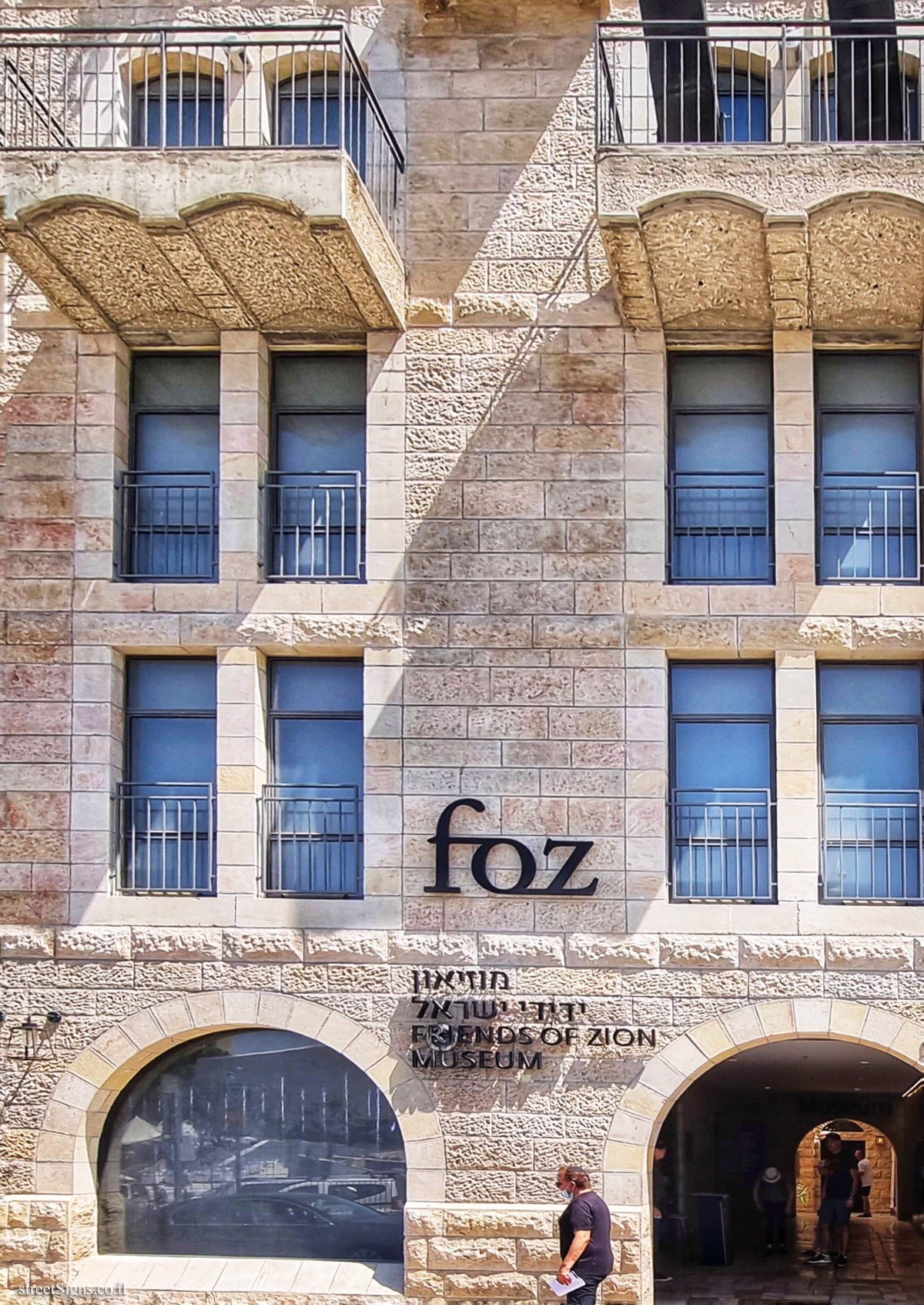On the sign:
וְאָהַבְתָ לְרֵעַך כָמוֹך
ויקרא יח
שכונת נחלת שבעה הייתה השכונה היהודית השלישית שנבנתה מחוץ לחומות העיר העתיקה בזמן השלטון העות’מני. כאשר החלו בהקמתה בשנת 1869, לא היו החיים מחוץ לחומות פופולאריים במיוחד, בעיקר בשל הסכנות שארבו וליהודי העיר בכל פינה, לכן בחרו שבעת מקימיה, לבנות את בתיה הראשונים בסמוך למגרש הרוסים ולדרך הראשית אשר חיברה בין ירושלים ליפו (רחוב יפו של ימינו). מייסדי השכנה, יואל משה סולומון יוסף ריבלין, מיכל הכהן, יהושוע ילין, בנימין סלנט, חיים הלוי ואריה הורוביץ, משותף מיוחד וחלוצי ועל פיו חולקה הקרקע בין המייסדים לשבע רצועות אורך, כך שכל חלקה גבלה בדרך הראשית מצפון.
ההסכם הכלכלי הראשוני שאומץ על ידי מייסדי השכונות הבאות בירושלים החדשה, הוביל לשיתוף פעולה בין דרי השכונה החדשה והיא נבנתה ללא תמיכה מקצועית של אדריכלים או מהנדסים, אלא באופן ספונטני, על בסיס הסכמות בין השכנים. כך תוך שימוש בחומרים מקומיים בלבד וידע עממי במקצועות הבניה, נוצרה רקמה עירונית בעלת מאפייני בנייה ייחודיים. נחלת שבעה הציורית מתאפיינת בסמטאות וחצרות המחברות בתי אבן בני קומה אחת או שתיים, מעוטרים בקישוטיות עדינה וגגות רעפים אדומים. בנוסף. הוסכם על סמטה רחבה יותר במרכז השכונה הנקראת היום ’מעלות נחלת שבעה’.
כה גדולה הייתה הצלחת היוזמה החדשה של משה יואל סלומון, ריבלין וחבריהם עד שבשנת 1875, עמדו כבר בשכונה כחמישים דירות יחד עם בתי כנסת ומוסדות ציבור. ואולם אחרי מלחמת העולם הראשונה, מתחילה ירידה הדרגתית במעמדה של השכונה עד שב - 1930 הבריטים מכריזים עליה כשכונה לשיקום ומייעדים אותה להריסה, דבר העוצר את התפתחותה והופך אותה לשכונה ענייה. בשנות השישים מתכננת עיריית ירושלים את הריסתה של השכונה לטובת הקמת כיכר עירונית גדולה ורק ב-1987 מתבטלת התוכנית הבריטית ומפעל שיקום ושימור נחלת שבעה יוצא לדרך.
מבנה זה, ברחוב ריבלין 22, ממוקם בחלקה הדרומי של שכונת נחלת שבעה, חלק שנקנה על ידי יוסף ריבלין וחיים הלוי בשנת 1874. המבנה אשר הוקם כבית מגורים על פי כללי הבנייה המסורתיים האופיינים לשכונה, מהווה עוד דוגמה למרקם השכונתי המיוחד של נחלת שבעה. בשנות הארבעים שימש הבניין כנגריה והיה חלק מתרבות בתי המלאכה בשכונה. לאחר שיקום השכונה בשנות ה-80 נפתחה בבנין מסעדת אל גאוצ’ו שהייתה מרכזית בחיי התרבות והפנאי החדשים בשכונה, עד שיפוץ ושימור המבנה והפיכתו לבית ידידי ישראל ביוני 2015.
foz - סמל מוזיאון ידידי ישראל
THOU SHALT LOVE THY NEIGHBOUR AS THYSELF
Leviticus Chapter 19:18
The Nahalat Shiv’ah District was the third Jewish neighborhood in Jerusalem to be built outside the walls of the Old City, during the Ottoman regime. When construction began in 1869, living outside the walls wasn’t particularly popular, mainly because of the dangers to Jews that lurked in every corner. This is why the seven cofounders chose to built the first buildings adjacent to the Russian Compound and the main road connecting Jerusalem to Jaffa (today’s Jaffa Road). The neighborhood’s founders Yoel Moshe Salomon, Yosef Rivlin, Michal HaCohen, Yehoshua Levi, Binyamin Salant, Haim Halevi and Aryeh Horowitz pitched in to purchase a plot of farmland about 15 acres in size. Before construction began, the founders wrote up a special pioneering code of regulations according to which the land would be divided into seven lengthwise strips in such a way that each section bordered the main road on the north.
The initial financial agreement which was adopted by the founders of the next districts to be built in the New City of Jerusalem, led to a collaboration between the residents of the new neighborhood which was built without the professional support of architects or engineers, instead it was built spontaneously based on agreements between neighbors. Thus using only local materials and an informal knowledge of construction, an urban fabric with unique characteristics was created. Picturesque Nahatat Shivah is disguised by alleys and courtyards connecting one or two story stone buildings featuring subtle ornamentation and red tile roofs. They also decided to build a wider alley in the center of the neighborhood, now known as Ma’alot Nahalat Shivah.
The new initiative by Yoel Moshe Salomon, Rivlin and friends was such a success that by 1875 the district boasted about fifty apartments with synagogues and public institution. However after Word War I the neighborhood began to go downhill until in 1930 the British destined it for urban renew and issued a demolition order halting its growth and turning it into a poverty stricken neighborhood. In the 1960s the Jerusalem Municipality planned to demolish the district and build a large city square in its place and only in 1987 was the British plan rescinded and the project to renovate and preserve Nahalt Shiv’ah begun.
This building at 22 Rivlin St, is located in the southern part of Nahalat Shiv’ah a section which was purchased by Yosef Rivlin and Haim HaLevi in 1874. The building which was built as a home according to the traditional rules typical of the district is another example of Nahalt Shiv’ah unique neighborhood fabric. After the renovation of the district in the 80s, the building housed the El Gaucho restaurant, important part of the neighborhood’s new cultural and recreational life, until the building was renovated for preservation and turned into the Friends of Zion House in June 2015
foz - Friends of Zion logo

 Click for a larger image
Click for a larger image